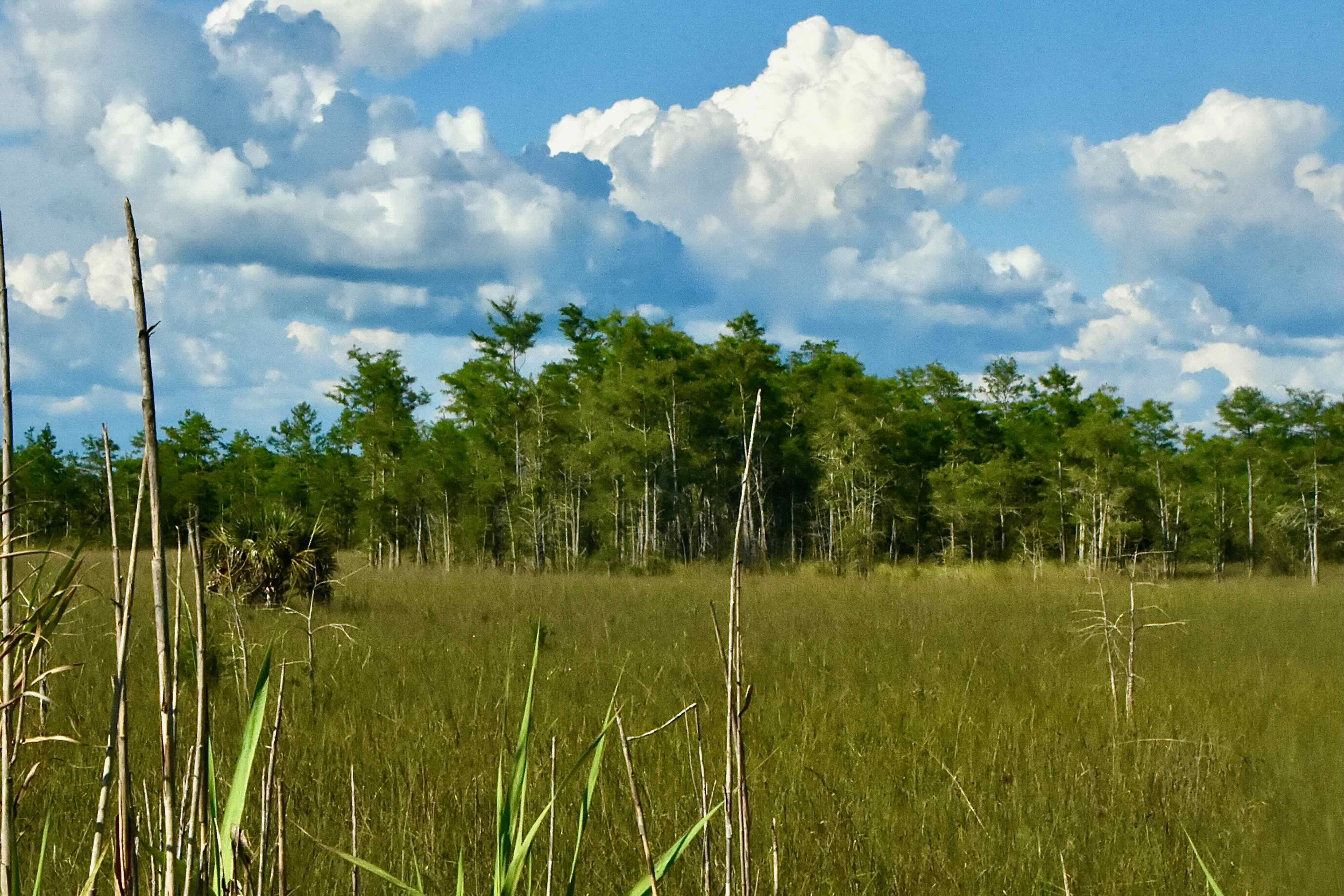We can't talk about Big Cypress National Preserve without first talking about the cypress trees themselves. There are two cypress species found in Florida and in Big Cypress: pond and bald. First thing to know is that most of the trees in Big Cypress are relatively young, their lives measured in decades rather than the centuries of old-growth cypress. Most of the large, old-growth trees were cut down for lumber during the 1930s, '40s and into the 1950s. A few still stand within the bounds of the preserve, but not many.
Second thing to know is that depending on water flow, cypress tends to form two kinds of swamps, dome and strand.
Dome swamps look like domes, trees pyramiding from small in the outlying rings, gradually getting taller and taller nearer to the center. Thing is all the trees are basically the same age, but are at different heights because of different growing conditions. The water in the outer ring is shallow and may dry up during the dry season. The soil has little in the way of nutrients, so the growth of the trees are stunted.
Conditions progressively change for the better closer to the center so the trees grow taller. If you could look down on the dome, you'd notice that the center is devoid of trees altogether, because the water in the center is too deep for trees to take hold. A strand swamp is similar except the water is in the center is flowing and the shape of the swamp is elongated. Pond cypress tend to grow in domes, bald cypress along strands. More on cypress further along in our tour.
NEXT STOP: A Diversity of Habitats
RETURN TO THE TOUR PAGE —||— RETURN TO THE MAIN PAGE
Second thing to know is that depending on water flow, cypress tends to form two kinds of swamps, dome and strand.
Dome swamps look like domes, trees pyramiding from small in the outlying rings, gradually getting taller and taller nearer to the center. Thing is all the trees are basically the same age, but are at different heights because of different growing conditions. The water in the outer ring is shallow and may dry up during the dry season. The soil has little in the way of nutrients, so the growth of the trees are stunted.
Conditions progressively change for the better closer to the center so the trees grow taller. If you could look down on the dome, you'd notice that the center is devoid of trees altogether, because the water in the center is too deep for trees to take hold. A strand swamp is similar except the water is in the center is flowing and the shape of the swamp is elongated. Pond cypress tend to grow in domes, bald cypress along strands. More on cypress further along in our tour.
NEXT STOP: A Diversity of Habitats
RETURN TO THE TOUR PAGE —||— RETURN TO THE MAIN PAGE

